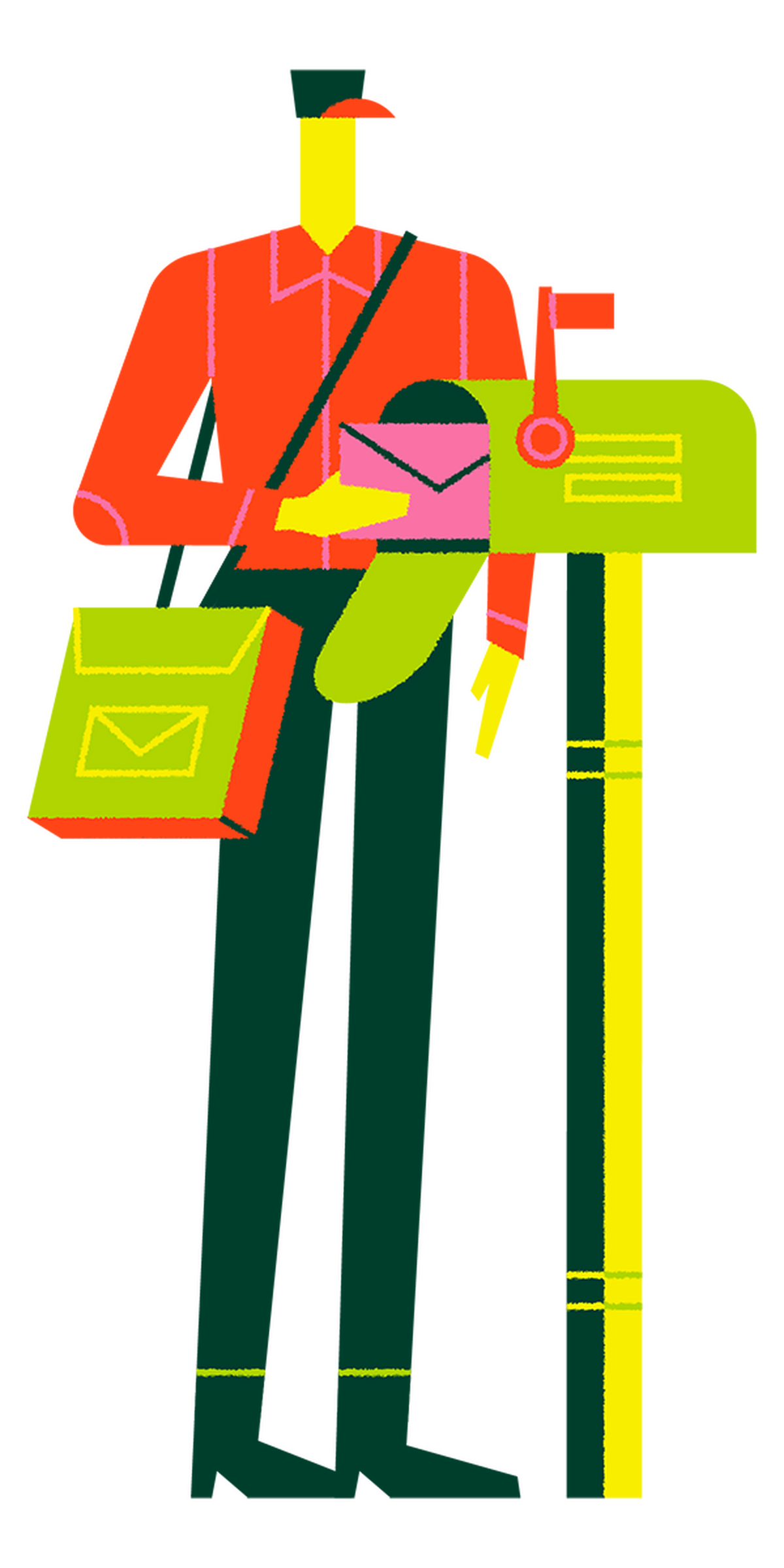
Riley Mann
Companies Now Have Many Tools to Monitor Employee Productivity. When Should They Use Them?
Monitoring employee productivity can make companies more efficient—and can benefit employees, too. But the practice, which makes use of a variety of methods including activity logging, tracking software, surveillance cameras, and the gathering of GPS data, also raises a host of concerns around trust, privacy, and fairness.
Though new forms of employee productivity monitoring have been in the news lately, companies have long used technology to keep an eye on how people do their jobs.
We spoke with a group of Kellogg faculty about how companies should approach productivity monitoring, and which pitfalls to avoid.
What can—and should—companies monitor?
Productivity is something that businesses obviously care about. But measuring it—and rewarding it—are not as straightforward as they may seem. Measurements that may be appropriate in one role or industry may be totally inadequate in another context. So where should a company start when considering monitoring employee productivity?
Thomas HUBBARD: What do you want people to do? What do you want them to produce? This is relatively easy to determine in some circumstances. For example, if someone’s doing a form of piece work, then you want them to produce whatever pieces that they’re producing. But many jobs are a lot more complicated than that and can’t be defined in terms of a small number of measurable tasks.
Hatim RAHMAN: Simple, rote tasks in which the quality and quantity is easy to measure and there’s less subjectivity about whether it’s done correctly are more amenable to monitoring. More knowledge-intensive complex tasks, where it’s less clear how to accomplish them or measure their quality, are less amenable to monitoring.
Sarit MARKOVICH: This is especially true when you think about innovation. In that case, it’s unclear what exactly you are looking for, so defining what you’re looking for may be very hard to do.
How can companies make productivity monitoring effective?
Workers in some roles and industries have experienced a degree of monitoring for years—so we know something about how monitoring can be used effectively. And in general, the key is make monitoring beneficial for both the firm and the employee.
HUBBARD: The trucking industry is an interesting place to look. It essentially monitored remote work in the form of onboard computers starting in the late 1980s.
Onboard computers let you monitor two things. First, they let you monitor the driver and how they operate their truck, so you can see whether they brake too much, or how they are operating the gears, and whether they are driving in a way that preserves the value of the truck. Second, the more advanced systems provide real-time location information to the dispatcher. Now they can match trucks to hauls a lot more efficiently. This is creating more output out of the same resources, and that’s a huge gain. And for drivers who are only paid when they are carrying a load, this is also good news.
In fact, there are plenty of ways to introduce monitoring technology and have it be a win-win: “We’re going to monitor you more, but we’re going to pay you more because you’re going to work harder.”
You just have to make sure that the productivity gains from monitoring are shared across the organization, and don’t just go to a subset of the organization.
MARKOVICH: Another aspect to consider is employee safety. Typically, employees are going to be more willing to accept monitoring when safety is a concern.
HUBBARD: Similarly, in situations where employees are at risk of being blamed for things that aren’t their fault, they’re going to be more willing to accept monitoring technologies because that provides a direct benefit to them.
RAHMAN: There is also learning. If you can use technologies to help people improve their performance, rather than merely tying it to sanctions and direct rewards, they will be much more willing to accept monitoring.
Some workers also appreciate that monitoring systems let them get credit for the work that they’ve done. So for example, with the change to remote work, some employees whose accomplishments are often overlooked, such as women and other underrepresented minorities, benefited from monitoring because it allowed them to get credit for work when they may otherwise be overlooked.
Where does productivity monitoring go wrong?
Despite the benefits of productivity monitoring, in practice, things often go awry. One of the biggest reasons comes down to just how difficult it is to define, measure, and incentivize productivity for more complex tasks.
RAHMAN: Goodhart’s law states that when a measure becomes a target, it ceases to be a good measure. So if you start to measure something—and do it poorly—people will game the system.
HUBBARD: This is the oldest problem in incentive theory. You see salespeople moving their sales up in order to hit quotas. You see teachers teaching to the test. You have the folly of hoping for Y and paying for X. These are old problems that are seemingly new again, because they are coming up in different contexts.
RAHMAN: Ideally, monitoring can work well. But a lot of times it is implemented haphazardly. For example, some organizations are trying to use monitoring software to see whether contract attorneys are engaged or not. We know with a lot of knowledge-intensive work that taking a walk can sometimes help you come up with a breakthrough idea. But if the software determines that, for example, you’re not looking at your screen in a way the program can track, it automatically logs you off. That’s poor implementation.
It also reflects a lack of trust between employees and organizations.
MARKOVICH: Trust is perhaps most challenging of all in the gig economy.
For ride-hailing, trust matters less, because the incentives are aligned, meaning that if I’m a driver I want this ride to end as soon as possible because then I can take another one, which is exactly what the rider wants as well.
But when you are paying per hour, rather than per task, this is where things are going to become a little bit more complex. One way that Upwork—a platform that connects clients with freelancer knowledge workers—goes about it is they make their gig workers record their screens. Then, in addition to their end work product, they send the client a log of what was happening on their screen while they were working to demonstrate how many hours they spent and all activity they performed during that time.*
Obviously, there are huge privacy concerns here in terms of knowing that people can watch your screen. But there is also this idea of, “I do not trust you.” I don’t know you, and it’s not clear I can trust you, and it’s not necessarily going to be a long-term relationship where we are going to build trust.
*[Editor’s note: In an email, Upwork said that it does offer freelancers the option to request that their time be entered manually rather than using time-tracking software. This software takes screenshots every ten minutes and tracks keystroke and click counts, which are then relayed to the client. However, if freelancers use the manual time option, they lose hourly payment protection.]
HUBBARD: The problem is that that's never how that they would treat you if you were actually located in the same place. Right? They need to figure out a way of interacting with workers that is much closer to the way that they interact with them if they were actually in the same place.
What should leaders keep in mind about productivity monitoring?
As both firms and employees adjust to the reality of remote work, and the potential of increased monitoring, here are some things to keep in mind.
RAHMAN: Frequent monitoring of more complex-oriented work generates resentment when it’s misaligned with the goals of the job someone is performing. This seems to happen most often when some of these stakeholders aren’t involved in the design and implementation of the monitoring software.
I know it can be difficult, but I personally would like to see the workers who will be monitored get more involved in how these monitoring systems are designed and implemented.
And remember: For some organizations the pandemic revealed that you don’t necessarily need enhanced monitoring. Because it happened overnight, a lot of organizations found, “Wow, our productivity was through the roof, our profits were through the roof, and we didn’t have a chance to figure out some very intricate system of monitoring.”
HUBBARD: The responsibility for making remote work effective cuts in both directions. The employee has to understand that if they want that extra flexibility, they will need to make remote work a win-win for their employer, and that could mean some kind of monitoring system. That’s the quid pro quo: “Okay, I’m not commuting as much, and I’m benefiting directly. Let’s figure out a way that you could share in those benefits so that it’s a win-win.”
MARKOVICH: If you reward people for just one thing, then this is what employees are going to gravitate to. But if you want them to perform an array of activities, then maybe a fixed wage is going to be more appropriate, because then they are indifferent in terms of how they’re allocating their time, and will do so in the way that is most productive.
RAHMAN: Frequent monitoring of more complex-oriented work does generate resentment, because it’s misaligned with the goal of what you’re actually performing. But people may be more amenable to more rote, well-defined work being more frequently monitored because it’s more objectively defined in value.
Often what I’ve seen in the case of Upwork and others is that some of these stakeholders aren’t involved in design and implementation of these monitoring software, that’s when I see some misalignment, or when they get it wrong. I know it can be difficult, but I personally would like to see workers, truck drivers, others, more involved in how these monitoring systems are designed and implemented.
Jessica Love
Fred Schmalz
Fred Schmalz
Riley Mann
Thomas Hubbard
Sarit Markovich
Hatim Rahman
Grip
University. All Rights Reserved. Privacy Policy.



